Overview
The ‘Ha Giang Loop’ refers to a 350 km long, narrow, continuously winding road where its starting point loops back to meet its end in Ha Giang Province. The loop route particularly goes through 4 valleys that are Quan Ba - Yen Minh - Dong Van - Meo Vac - then back to Quan Ba.
Ha Giang Loop traverses challenging terrains of mountain hollows, high passes, deep chasms, canyons, and geological fractures. Yet, what sets it apart is the natural landscape, which is both awe-inspiring and magnificent.
In 2021, Lonely Planet named the Ha Giang Loop as the top route in its list of the 7 most beautiful road trips in Vietnam.
How to Get to
Ha Giang is situated at the Northernmost point of Vietnam, 300 km from the capital Hanoi. Currently, there is no direct airport or train to the province. This means you need to spend several hours traveling to get there. The 2 practical options for you are by long bus or by motorbike:
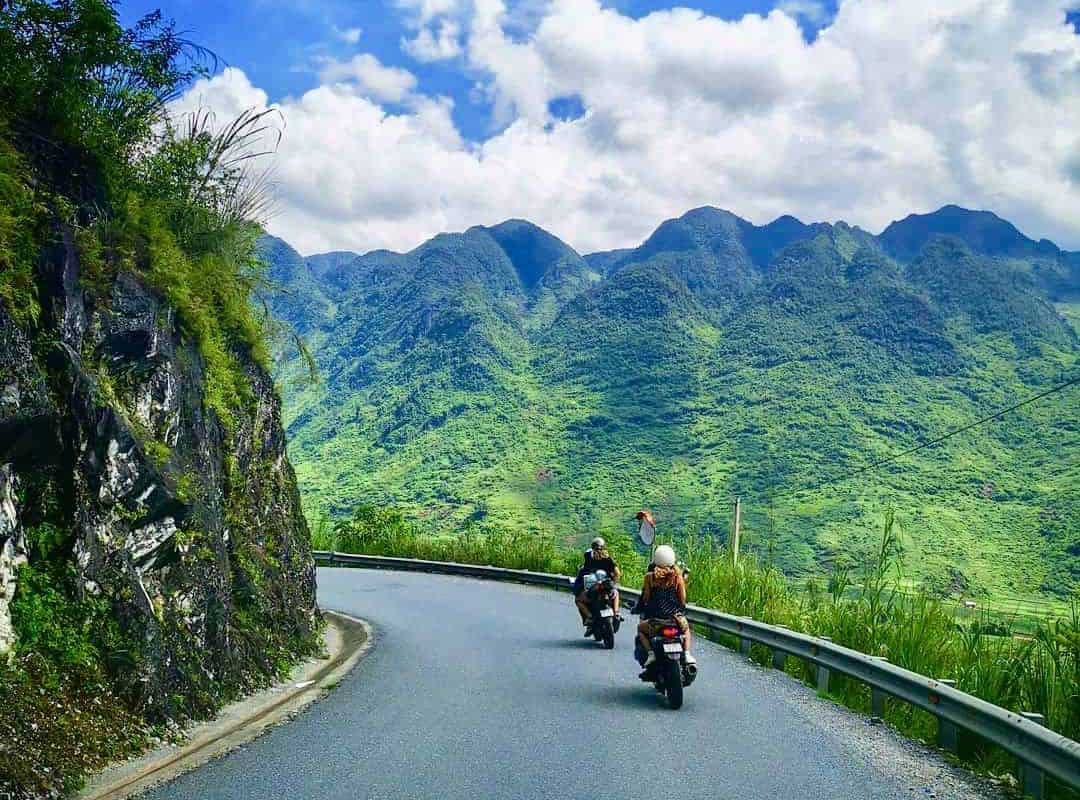
Ha Giang Loop by Motorbike
|
Transportation |
Travel Time |
Cost |
Note |
|---|---|---|---|
|
Long Bus |
6 - 8 hours |
10 - 16 USD/ticket |
Fast, convenient, saves effort, suitable for large groups with ample luggage. |
|
Motorbike |
At least 12 hours |
The rental fee for a motorbike is about 4 - 10 USD per day, and gasoline costs nearly 1 USD per liter. |
Flexible and suitable if your goal is to explore multiple destinations and undertake extended journeys. |
In general, visitors often take a long-distance bus to Ha Giang then rent a motorbike or hire a motorbike driver. The cost for the motorbike taxi service is from 20 - 28 USD/day.
Best Time to Visit
The serpentine trail of Ha Giang loop is best enjoyed between September and March when the weather is nice and there is less rain. Notably, the scenery of the loop changes with the seasons and thus has unique features at different times of the year to admire:
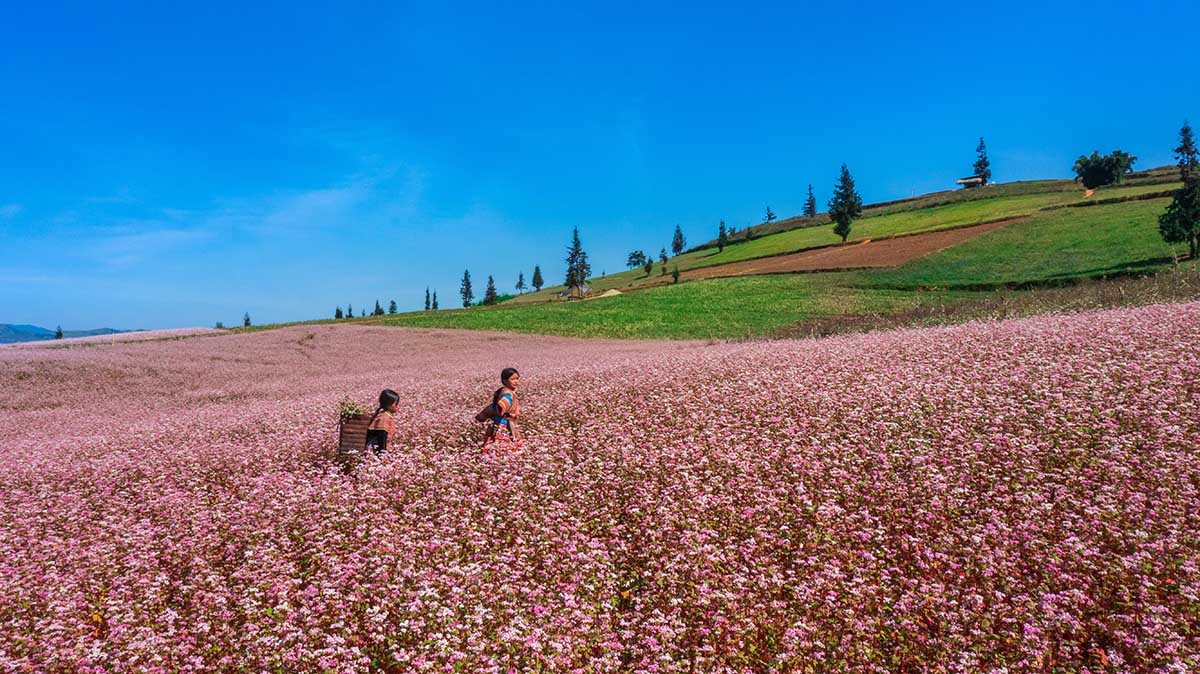
The best time to see Ha Giang Loop
-
Spring (February - March): The season of plum and apricot blossoms creates poetic scenery.
-
Summer: (April - July): The Khau Vai Love Market and traditional festivals take place once a year.
-
Autumn (August - October): The season of rice on terraced fields.
-
Winter (October - December): The season of buckwheat flowers - a characteristic bloom of the highlands of Vietnam.
You should be cautious if traveling during the rainy season in Ha Giang from June to August. Due to its mountainous terrain, the region is prone to landslides and water overflow on certain mountain passes, which can obstruct travel and pose a danger.
What to See
The travel plan to explore the Ha Giang loop can take anywhere from 2 to 5 days. As you traverse the hundreds of kilometers of the trail, be sure to jot down the following destinations to visit along the way:
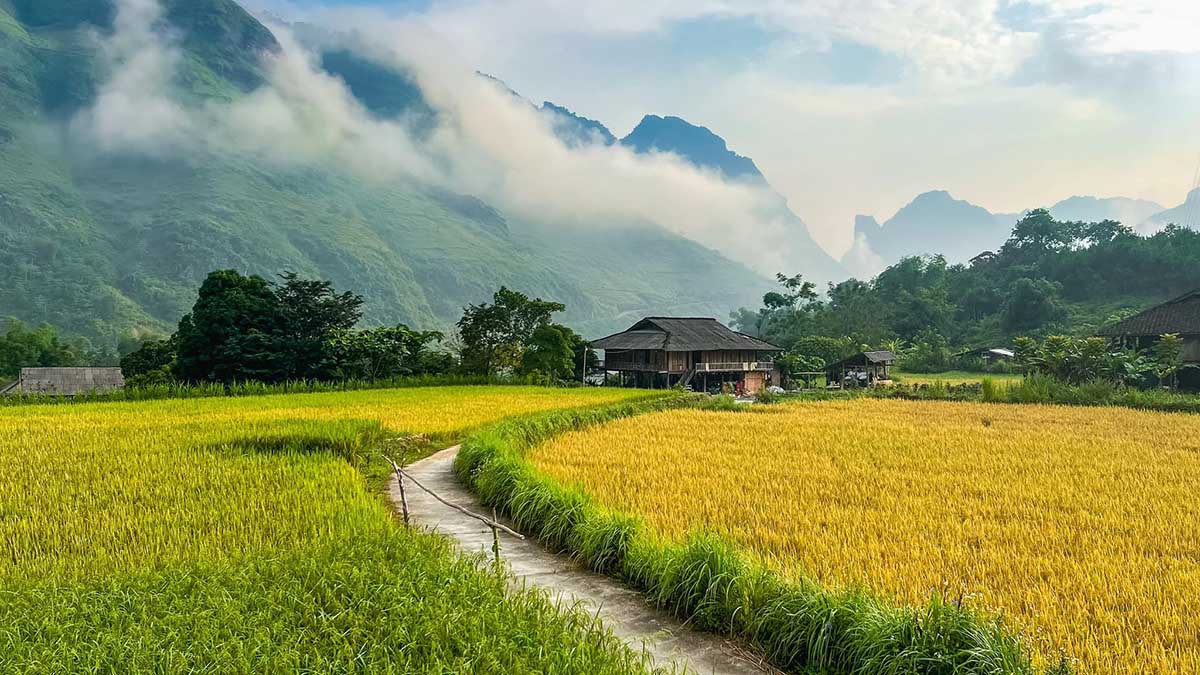
Things to see when discovering Ha Giang Loop
-
Quan Ba Gate: Also known as Heaven’s Gate. This is the first gateway on your journey, opening up to the realm of surreal nature and ethnic locals.
-
Yen Minh Town: This town is a well-known rest spot for long-distance travelers. Visitors can stop to blend into local life, visit the highland market, and relish the mountain’s special delicacies.
-
Du Gia: Tucked away in the highland mountains, this distant town is highly favored for its ethereal nature scene and relaxing ambiance.
-
Tham Ma Pass: Here lies a striking incline along the Ha Giang Loop. This slope earned the name ‘horse-challenging’ because in earlier times, even the most resilient horses found it daunting to climb up this strenuous section.
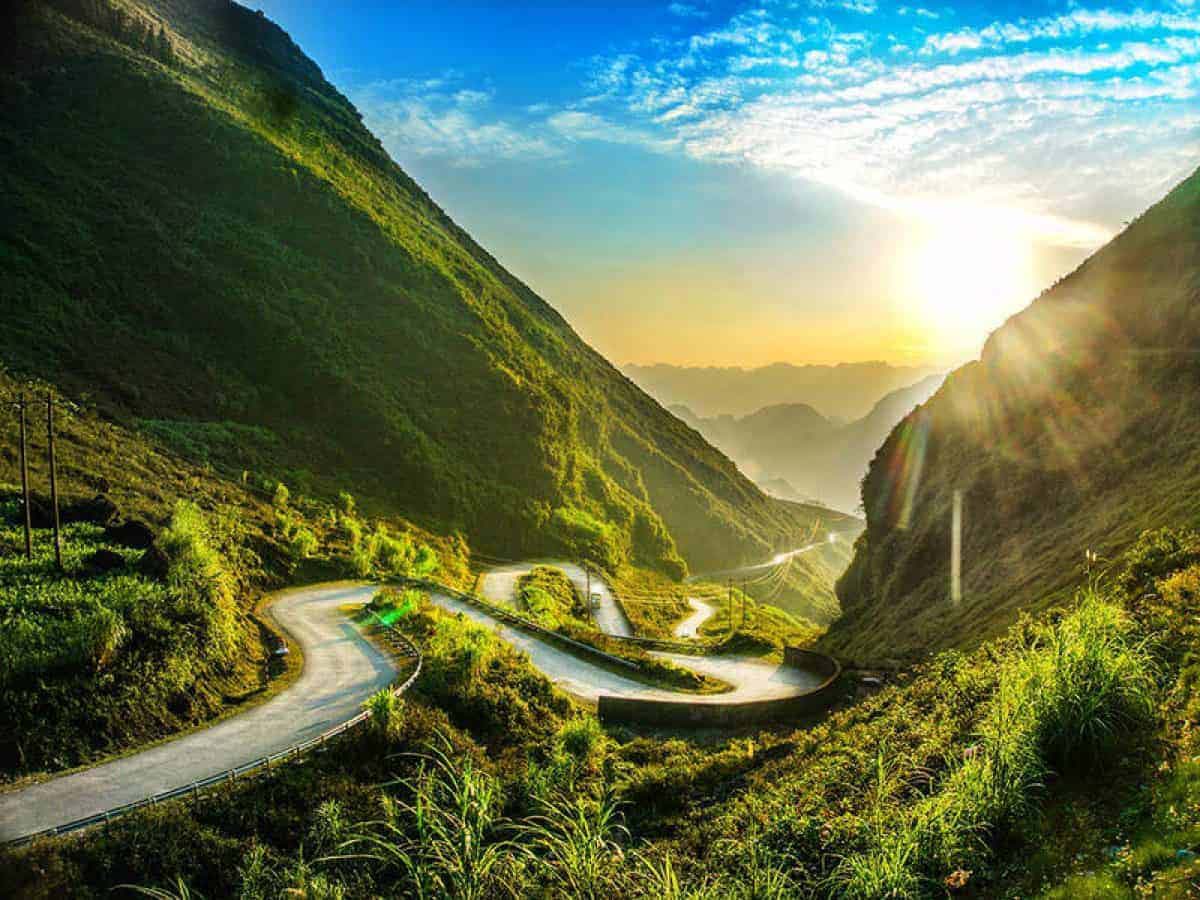
The twisty Tham Ma Pass tests the skills of motorists
-
Ma Pi Leng Pass: One of the top four peaks in the Northern highlands of Vietnam. Ma Pi Leng is a symbol of conquest and the pinnacle of the Ha Giang Loop.
-
Dong Van Karst Plateau: Recognized by UNESCO as a global geopark, with 80% of its area covered in limestone and housing numerous fossils dating back 400 to 600 million years.

Ha Giang Loop leads to heavenly scenery
-
Tu San Canyon: The deepest canyon in Southeast Asia. Within its towering walls is the contrasting beauty of the gently flowing Nho Que River.
-
Meo Vac town: This is another town along the Ha Giang Loop. Every April, it hosts the famous Khau Vai Love Market.
-
Lung Cu Flag Tower: The monument marking the beginning of Vietnam’s territory in the North.
-
Palace of the H’Mong King: The house recalls the life story of the H’Mong King and his son. Built in 1898, its architecture is a fusion of H’Mong, French, and Chinese influences.
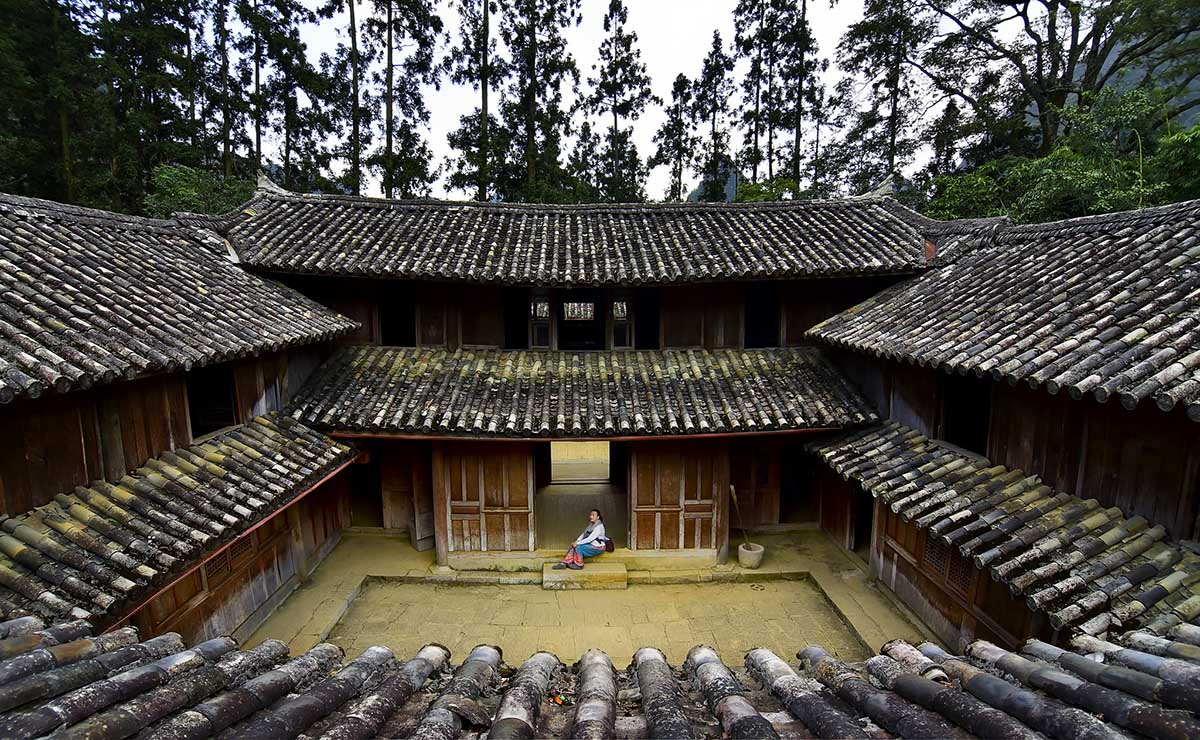
Stop by to see local heritages
Travel Tips
Given the challenging terrain, the ideal way to explore Ha Giang Loop is by motorbike. It is a journey that requires proper and thorough preparation. Here are some travel notes for motorbikers:
-
Going on a sunny day allows you to see the scenery in a more spectacular way.
-
Morning in the Ha Giang Loop is usually foggy, but the fog will be cleared by midday as the sun rises.
-
Don’t forget to bring warm clothes, even during summer trips. Nights and high-altitude areas in the loop can experience sharp temperature drops.
-
Carry a rain jacket since the highland weather can sometimes bring small bouts of rain.
-
Pack compactly as your luggage will be transported by motorbike.
-
Bring along some VND cash for convenient transactions.
-
There are numerous homestays and guesthouses along the loop. They offer a fantastic opportunity to experience local culture and meet the residents.
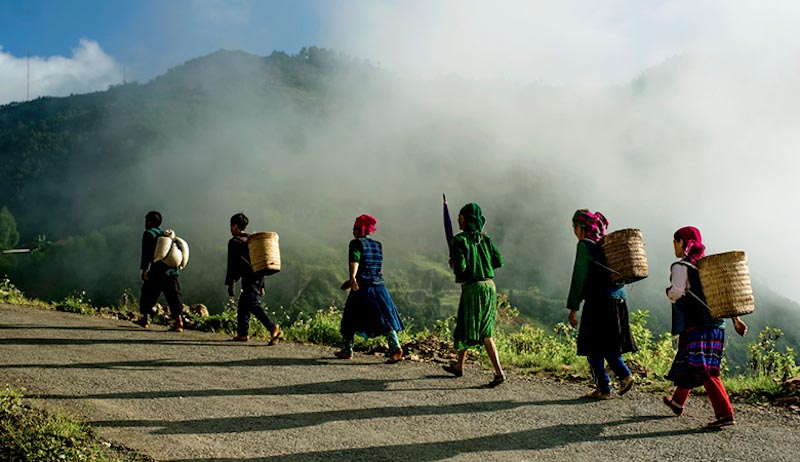
Tips to visit Ha Giang Loop
-
Locals don’t speak much English. You can consider finding a local guide to escort you on the trip for easier navigation and a better understanding of the destinations.
-
Get ready for tough roads. The routes on the Ha Giang Loop are often narrow, and winding, and may be in poor condition in places.
-
Don’t forget to enjoy Hà Giang’s specialties such as steamed rice rolls, buckwheat cakes, sticky rice, smoked pork or beef, etc.
-
The budget for a 3-day trip to Ha Giang is about 200 USD.
To gain more insights, navigate to our post about Ha Giang travel guide!
The Ha Giang Loop is an incredible road trip that immerses you in the pristine natural scenery and rich culture of Ha Giang. The above travel guide is what you should know before taking this challenging route. If you need more support or advice for Vietnam tours, you can leave us a message in the chat box.







